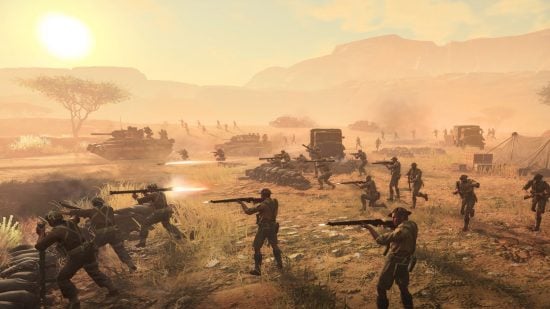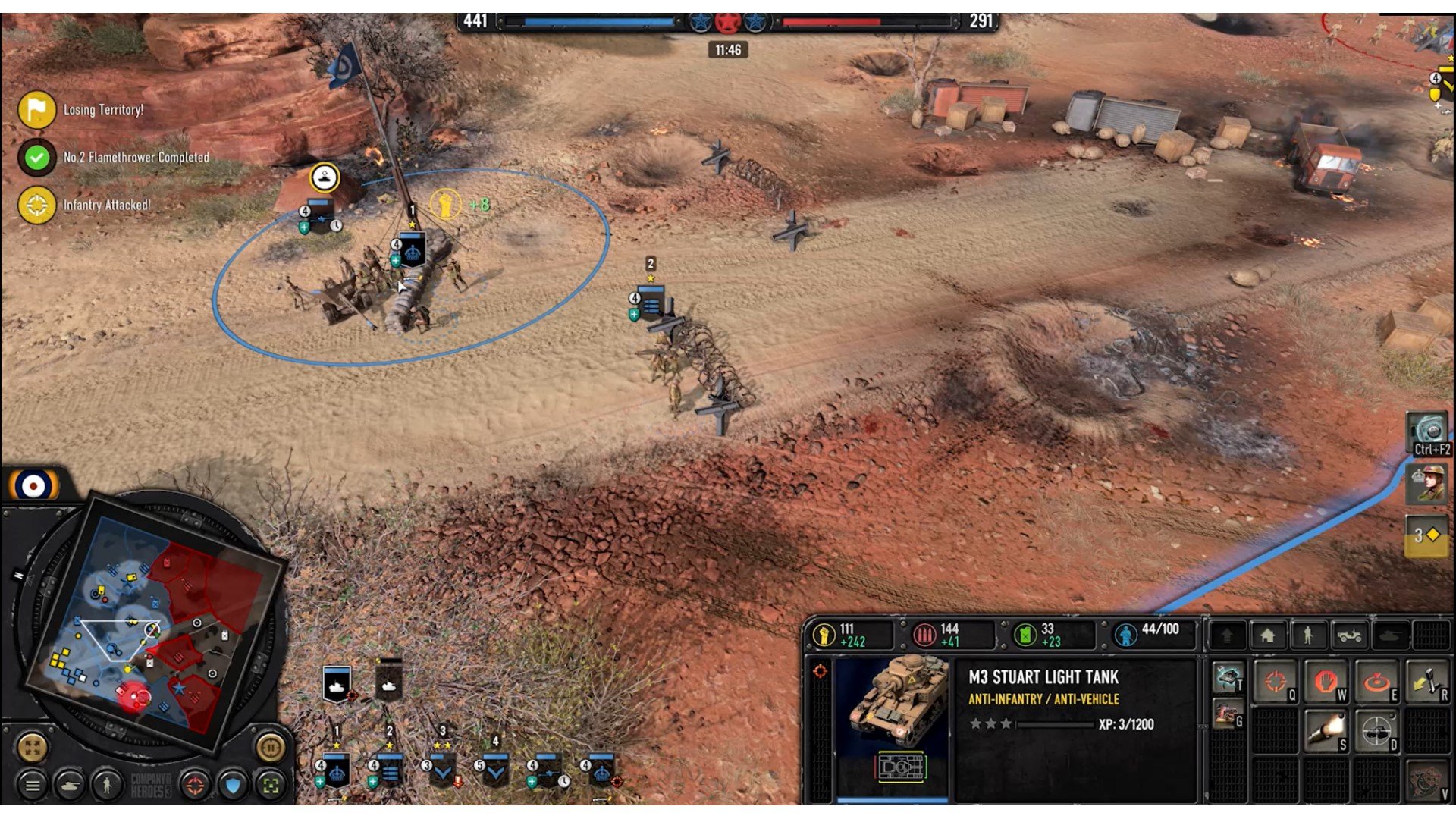Our Verdict
Company of Heroes 3 is an excellent RTS. Though I'm not completely won over by its new campaign approach, the customisation and decision-making available is admirable, and the core gameplay is solid as a rock.
Company of Heroes 3 is the long-awaited third game in this World War II RTS franchise by Relic Entertainment. I was impressed by what I got to see of the game a few months ago, and after plunging further through its two campaigns, that good first impression has held firm. A few niggling issues hold it back from true perfection, but nonetheless this is an extremely competent evolution of the CoH franchise that threads the needle between the competing needs of its target audiences. It’s more accessible for newbies to the battlefield, while providing the same but more (and with some quality of life upgrades too) for its entrenched fanbase.
The main thing to know is that as an RTS game, Company of Heroes 3 is a whole lot of fun. It doesn’t reinvent the wheel, and long standing players will have an easy time jumping into the new title, but there’s plenty of minor upgrades to enjoy. And the main thing is there’s more to enjoy – four factions to get to grips with, tons more units and abilities to learn, and two campaigns with 41 unique missions between them, before you even dip your toe into the multiplayer meat of the game. If you’re a fan of what Company of Heroes 3 brings to the table, the game is going to last you a good long while.
Graphically, the environments are lovely, varied and colourful, and they get churned up wonderfully by destruction effects that deserve a litany of praise. You will have little trouble meeting the Company of Heroes 3 system requirements. Maps feel quite dynamic as cover and buildings get torn to pieces, and engineers build new structures to fill the gaps. The empty shells of vehicles form new barricades, and there’s even tools you can use to bring enemy or friendly tanks back to life. I also enjoyed the game’s sound design – some effects feel less weighty than they might, but there are particular highlights. Artillery is bombastic and terrifying, and the ricochet noise of a round failing to pierce armour plating is great.
As for quality of life and accessibility changes, base building is easier than in previous Company of Heroes games: you don’t have to bring an engineer back to set up a new structure. You can also set units to automatically replenish instead of doing so manually, a real lifesaver for those struggling to keep up the APM. Then there’s new little features like breaching buildings and towing vehicles and weapons around, and the cover system has been upgraded to take into account, to coin a phrase, who has the high ground.
Tactical pause, allowing you to queue actions up in single player matches, is a welcome accessibility option added to the game, at least in theory. However, I found it a real fiddle to use for anything more complicated than setting up a few preliminary move orders. There’s no way to remove just one order from a series, so you have to constantly clear the whole lot each time a situation changes (which, as a rule, is happening constantly). In the thick of fights I was forever forgetting to do this, and wondering why my infantry was running in the wrong direction before turning to engage. To me, it seems most useful outside of combat, which is probably the exact opposite of what’s intended.
The most eye-catching new feature in Company of Heroes 3 is the overworld map in the game’s Italian campaign, where you play as the British and US forces. This map mode lets you build your own companies, upgrading them with your choice of new units and abilities over time. It’s not quite Total War – you don’t build units ahead of time to bring along to battles – instead your choice of company and detachment will shape the options available to you on the RTS level, and the health of your companies dictate your starting resources.
Conceptually I think there’s brilliance in this idea. It allows you to choose your own adventure, taking on missions in the order you prefer, and bringing along a roster heavily tailored to your own preferences. However, I’m not sure I want my COH experience to include manoeuvring armies around on a campaign map, managing supply, clearing out fortified positions that chip away at your company’s health bars, and dealing with lots of less interesting skirmish battles. I’d honestly prefer it if I could have the same degree of choice but without the busywork.
To be clear, there’s still a large number of exciting bespoke missions in both the Italian, and the more traditional North African campaign, but through the course of the former, you’ll encounter plenty of unplanned fights. Relic’s done a good job of including a wide range of side objectives to shake these up, which certainly alleviates my whinging somewhat, but these were always the low points of my time with the game.
It doesn’t help that the AI seems to struggle a bit when it has to worry about capturing objectives, which meant these battles were never as challenging or as interesting as the tailored missions. Battles in Company of Heroes 3 can easily take up a whole hour, so I found myself hitting the autoresolve button for these whenever a good outcome seemed likely. I think the Italian map mode has some great ideas, but ultimately I worry the bits in between the main missions will dampen my enthusiasm for repeat playthroughs.
The hand-designed missions are executed very well, however. My fondest moments were with the game’s more standard North Africa campaign, which involves utilising a nice mixture of infantry and armor units. There’s a flipping flame tank you guys! This had some challenging fights, the best of which emulated the frenetic, multiple plate spinning feel of combatting a multiplayer opponent. I particularly enjoyed a mission which involved raiding convoys, setting up mines and positioning troops to deal with a mobile force that just wants to get past you.
It’s worth highlighting Company of Heroes 3’s efforts at storytelling here. The Italian campaign does good work with your squabbling advisors, and a propaganda radio station that exists purely to taunt you. But the North African campaign is particularly interesting, as Relic has tried to tell a human story about war, following the civilian stories of a Jewish Berber family. It’s an interesting and admirable attempt, but so far it feels so disconnected from the gameplay that I’m not sure its emotional beats quite land. When you’re scrabbling in the sand trying to make sure your tanks are all facing the right way or your grenades go off just so, there’s not much time for introspection – and the story moments are so split up by big long stretches of gameplay that it’s not easy to follow.
Overall I think Company of Heroes 3 is an extremely solid RTS game and a very good option for lovers of the genre, who in 2023 aren’t exactly spoilt for choice. It’s not without its flaws; there are a few foibles – but at its core is a very well put together game. There’s so much good content available here that it’s easy to recommend this for strategy fans.



